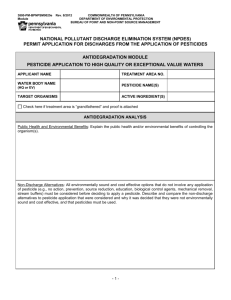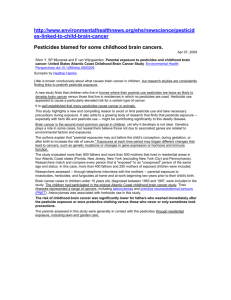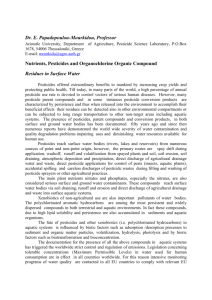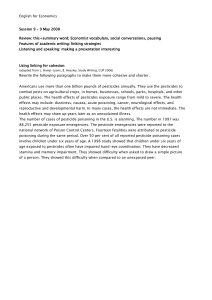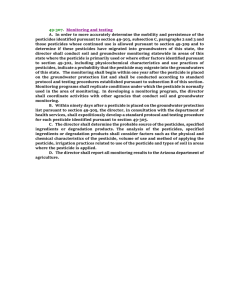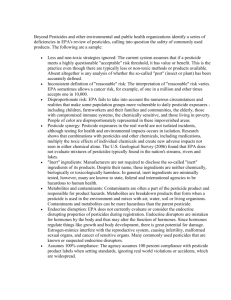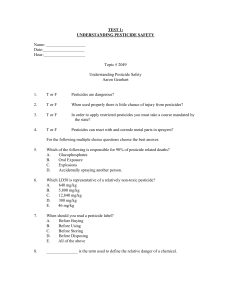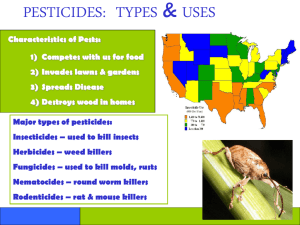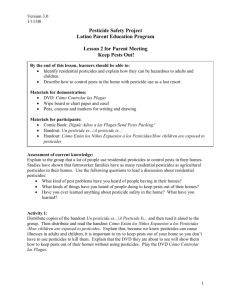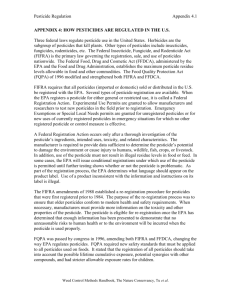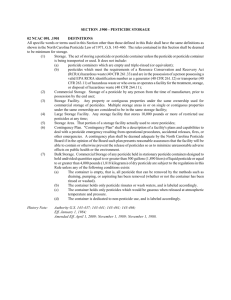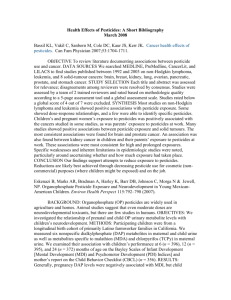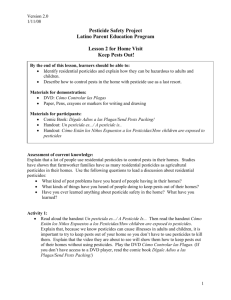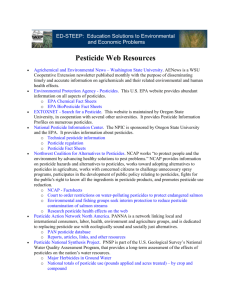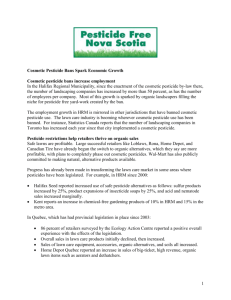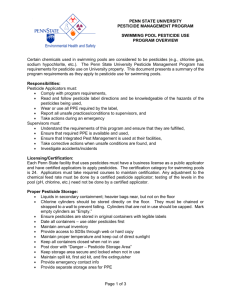Prediction of Climatic Impacts on Pesticide Leaching to
advertisement
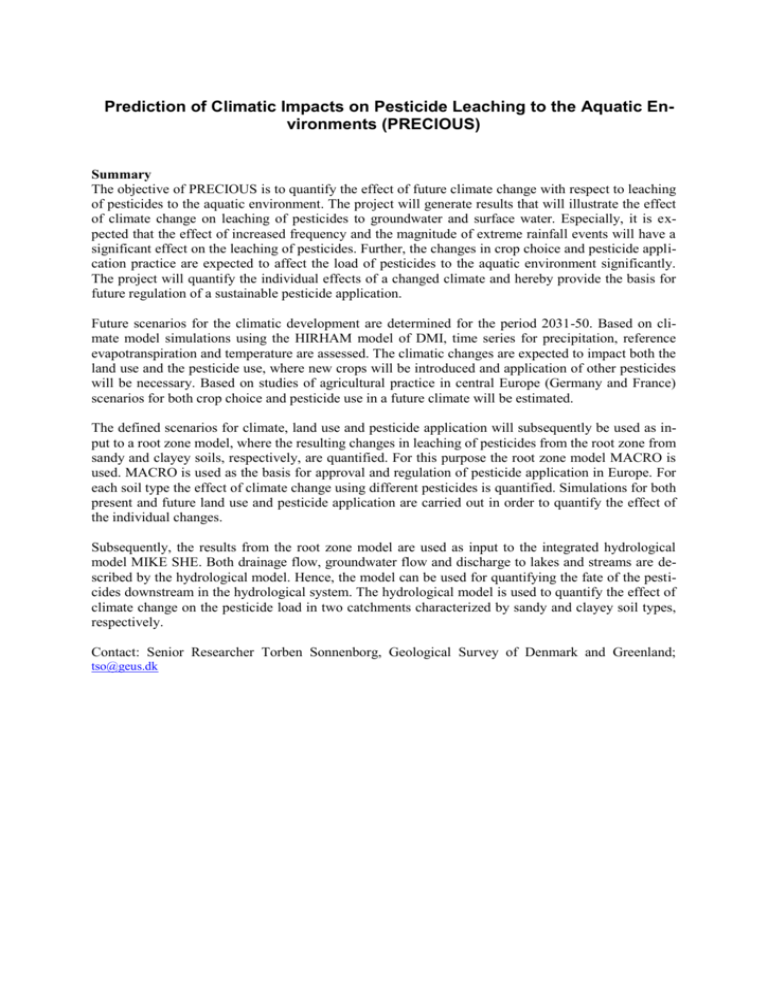
Prediction of Climatic Impacts on Pesticide Leaching to the Aquatic Environments (PRECIOUS) Summary The objective of PRECIOUS is to quantify the effect of future climate change with respect to leaching of pesticides to the aquatic environment. The project will generate results that will illustrate the effect of climate change on leaching of pesticides to groundwater and surface water. Especially, it is expected that the effect of increased frequency and the magnitude of extreme rainfall events will have a significant effect on the leaching of pesticides. Further, the changes in crop choice and pesticide application practice are expected to affect the load of pesticides to the aquatic environment significantly. The project will quantify the individual effects of a changed climate and hereby provide the basis for future regulation of a sustainable pesticide application. Future scenarios for the climatic development are determined for the period 2031-50. Based on climate model simulations using the HIRHAM model of DMI, time series for precipitation, reference evapotranspiration and temperature are assessed. The climatic changes are expected to impact both the land use and the pesticide use, where new crops will be introduced and application of other pesticides will be necessary. Based on studies of agricultural practice in central Europe (Germany and France) scenarios for both crop choice and pesticide use in a future climate will be estimated. The defined scenarios for climate, land use and pesticide application will subsequently be used as input to a root zone model, where the resulting changes in leaching of pesticides from the root zone from sandy and clayey soils, respectively, are quantified. For this purpose the root zone model MACRO is used. MACRO is used as the basis for approval and regulation of pesticide application in Europe. For each soil type the effect of climate change using different pesticides is quantified. Simulations for both present and future land use and pesticide application are carried out in order to quantify the effect of the individual changes. Subsequently, the results from the root zone model are used as input to the integrated hydrological model MIKE SHE. Both drainage flow, groundwater flow and discharge to lakes and streams are described by the hydrological model. Hence, the model can be used for quantifying the fate of the pesticides downstream in the hydrological system. The hydrological model is used to quantify the effect of climate change on the pesticide load in two catchments characterized by sandy and clayey soil types, respectively. Contact: Senior Researcher Torben Sonnenborg, Geological Survey of Denmark and Greenland; tso@geus.dk




